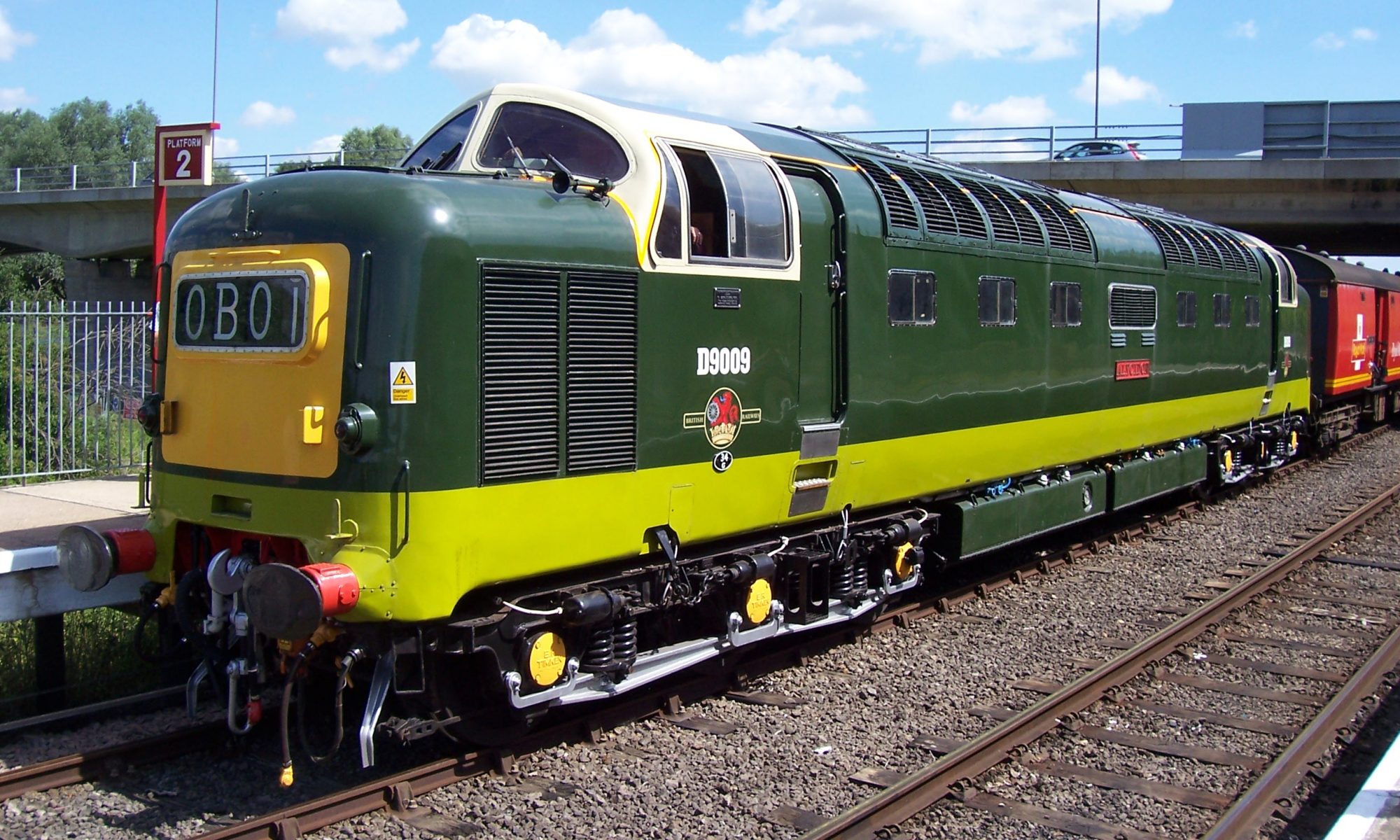Monday the 7th of November was the start of the big swop over of the gates, but as reported previously much amazing work had been done by Alan Scott, Dave Read and the rest of the S&B team over the preceding months with the construction and decoration of the four new gates up in the depts of the running shed. The twenty 4.5 m long steel rods for the gates were manufactured by the workshop staff and it was to the workshop staff that we turned to manufacture the eight packers required for the gate hinges.
These were required because the new gates were 6mm slimmer than the old gates and therefore we needed eight packing pieces which were 1200mm long with the top packers having five 20mm holes in them and the bottom packers having four 20mm holes in them, all drilled out by Jon Carter. These packers were then given two coats of black Hammerite paint by Richard Dorman ready for the big day.
The First Day 7th November.
After a very wet weekend Monday the seventh dawned as a chilly but dry day, and the Stations and Building team assembled at 08.00 and were joined by Don Osbourne of the Permanent way department, where he instructed us in the use of the two platelayers’ trollies which were pushed up onto the ash pit road in front of Blue Circle. With the use of the scaffolding hop-up we wheeled the first gate from the build area to the front of the running shed and with all hands lifting and supporting the gate it was laid across the two platelayers’ trollies. The same procedure was used to move the second gate on top of the trollies, and once we were satisfied all was safe, the trollies with their load, were shunted via the turntable road to platform five (alongside the café Conservatory).
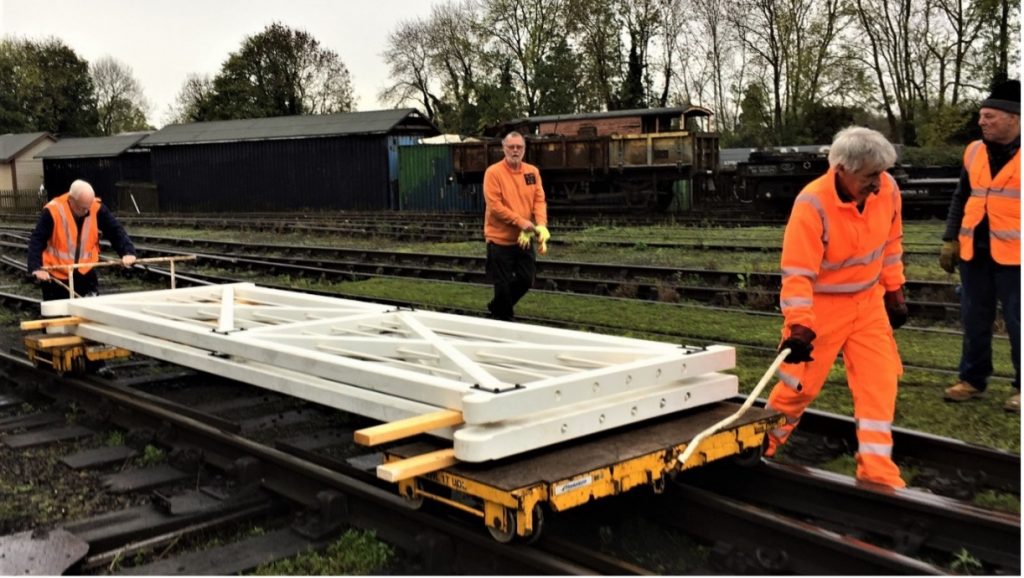
In mid-shunt, with Don leading by example and john doing all the pushing!
Once at platform five the first gate was lifted off and placed on two trestles ready for the fitting of the reused hinges. By this time the five-man team of the signals and telegraph department lead by David Harrison (on annual leave from his day job) assisted by John Wood, Barry Noble, Simon Ekiert, and Keith Parkinson had assembled and were engaged in the disconnection of the crossing gates mechanism for the removal of the first gate.
With the arrival of Stan Bull from the workshop with the telehandler (multi terrain fork truck) the first gate was removed and deposited against the face of platform five. Once the old gate was free from the telehandler, the two sets of hinges were removed, and the parts were cleaned up by John Beech. Each hinge is made up of four parts, the two long strap pieces which go either side of the gate and these each have a long section of treaded rod at the pivot end which treads through the main clamp section. This main clamp section has a stepped cross section which fits around the side of the gate stiles, and the back section of the clamp which holds the gate onto the operating spindle.
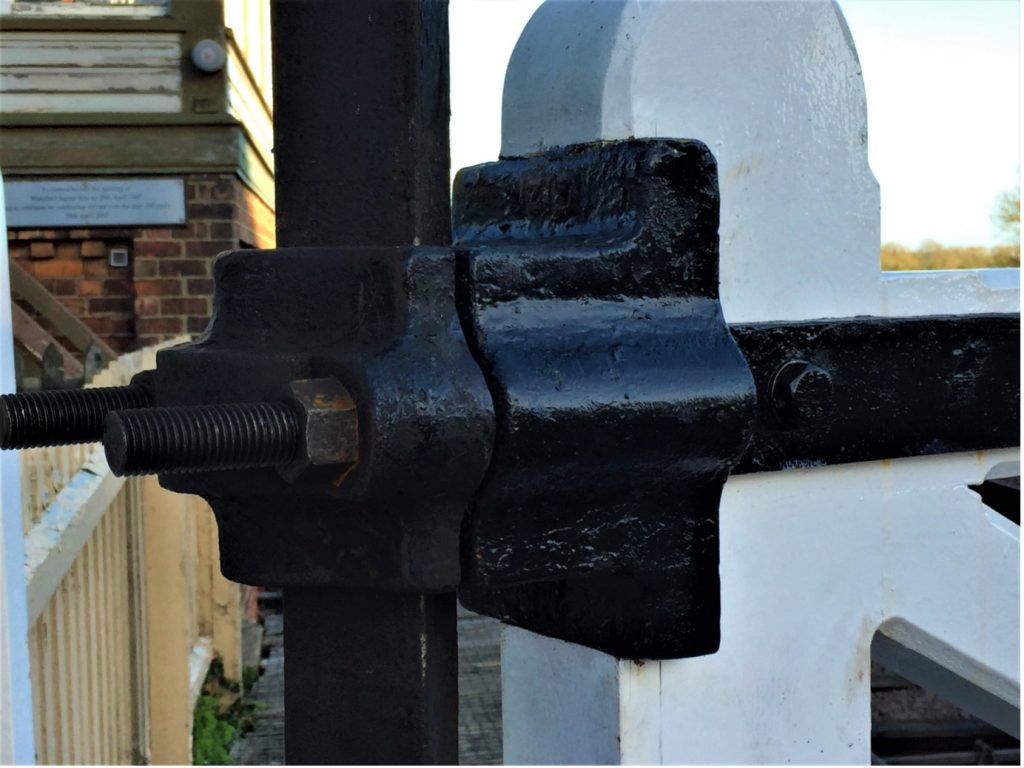
The fitted Hinge arrangement showing the hinge plate and the two clamp plates.
Following measurements given from David Harrison, Alan Scott and Dave Read set about cutting out the notches in the gate stile, to enable the main clamp section to sit in the correct position on the gate thus ensuring that the gates once fitted would sit in the correct position and that they would not clash against each other. Once the clamp position was secured then each of the hinge straps could be offered up and the bolt holes marked out ready for drilling. Once the holes were drilled the hinge plates, complete with a packing piece on the railway side of the gate, were fitted and tightened into position.
With Stan’s arrival back from the shed the first gate was ready for lifting and putting into position.
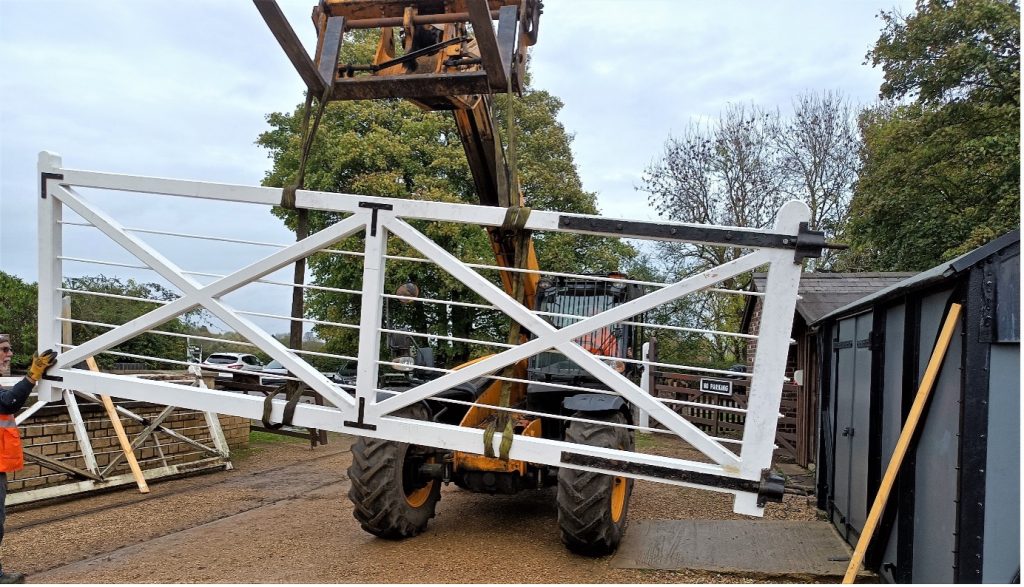
The first gate up in the air. The hinge plates and the main clamp section can be seen on the end of the gate.
Whilst the work on the new gate was being completed the S&T team had been busy getting the rest of the gate mechanisms disconnected and the second gate ready for removal. With the new gate cautiously transported to the vacant gap of the level crossing at the end of platform 3. The gate was offered up to the drive spindle and secured into position albeit further adjustment would be required once all the gates had been fitted.
The second gate was lifted onto the trestles ready for notching out the next morning, which also freed up the trollies for Don Osbournes P/Way works the next day.
The Second Day 8th November
The Tuesday was another dry day and with the S&T team engaged early on the disconnection of the second gate from platform 2 the whole team got off to a flying start. With the telehandler in the capable hands of Micky Winters today, as Stan was otherwise engaged, the gate was removed very early, and the previous process was completed all over again on the second gate which was ready of installing by lunchtime.

The Second gate being fitted.
With the excellent progress made so far it was decided to remove the third gate and barrier off the opening overnight. So, with its removal the gate was placed against platform 5 face, once the old gates had been transported up to the top end of the car park.
The Third Day 9th November
Wednesday was another dry and bright day with a slight breeze. Upon arrival at 08.00 the S&B team set about putting the platelayers’ trollies onto the track and shunting them up onto the ash pit road where we loaded on to them the last two gates as per the previous method and shunted them down to platform 5. Here the first gate was set up on the trestles waiting the critical dimensions from David Harrison for the notching out. With the third gate already removed the S&B team members John and Richard set about removing the old hinges etc and started the cleaning up of the hinges.
By this time the S&T team had arrived and started with the readying of the fourth gate for removal. Once the third gate was notched out and the refurbished hinges fitted, Stan was in attendance with the telehandler ready for the first lift of the day which proceeded well and resulted with the third gate being fitted by 11.00. The fourth gate was then removed, and whilst the S&T team were sorting out the underground linkages etc the S&B team set about the removal and refitting of the hinges to the new gate which was finally being lifted into position by 14.30. Once the fourth gate was fitted there was a problem with the third and fourth gate clashing, but as the time was getting on, the issue was left to be resolved the next day.
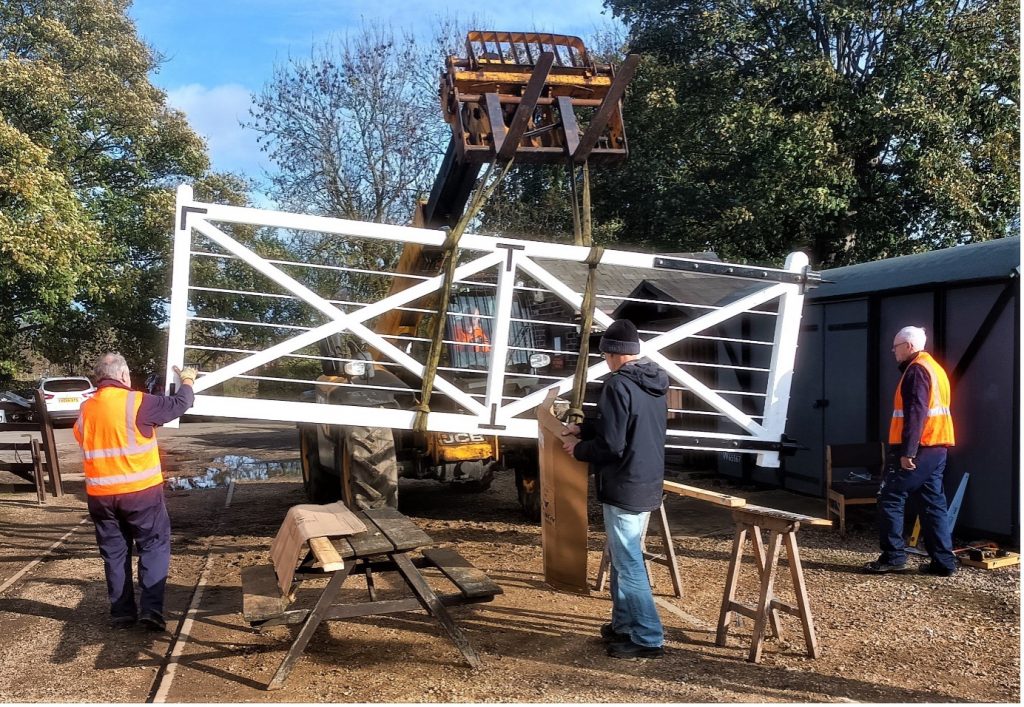
The fourth Gate being transported to its final position.
The Fourth Day 10th November.
Thursday saw Alan Scott and Dave Read from the stations and building team tie up with the signals and telegraph team to sort out the issue with the third and fourth gate. After a lot of tightening and adjusting the swing of the gates was achieved so that they did not clash when in the open position (against the railway). Alan and Dave assisted with the fitting of the two new lamp brackets to the diagonal gate positions and after they were assured by David Harrison, they were not required any more they departed for an early day.
The S&T Team caried on with the reassembly of the underground linkage and the fitting of the two newly restored red lamps to the crossing gates.
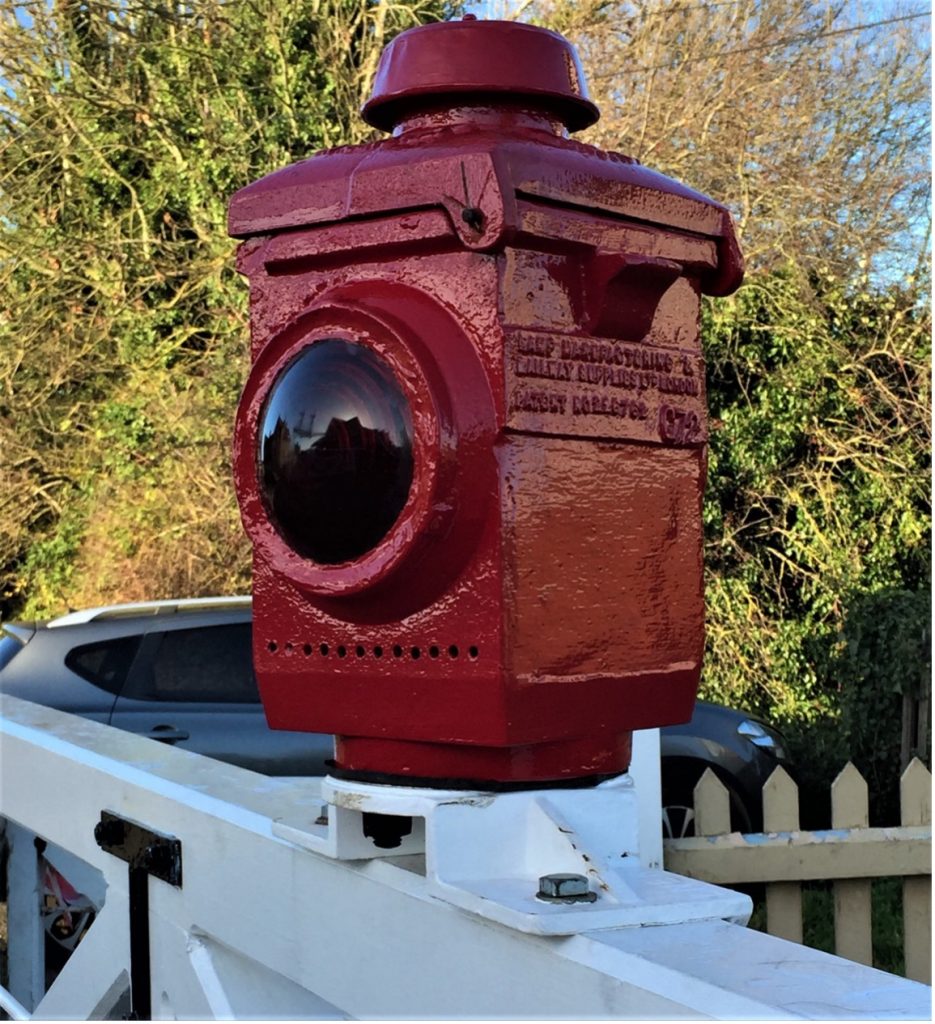
One of the newly restored lamps fitted to the new correct mounting brackets.
Subsequently
Since the installation works took place the S&T team have rewired the lighting into the new red lamps and fitted the newly manufactured boots for the bottom of the gate posts where they lock into the ground dogs. These four boots were manufactured by our staff in the workshop and painted black by John and Richard of the S&B team.
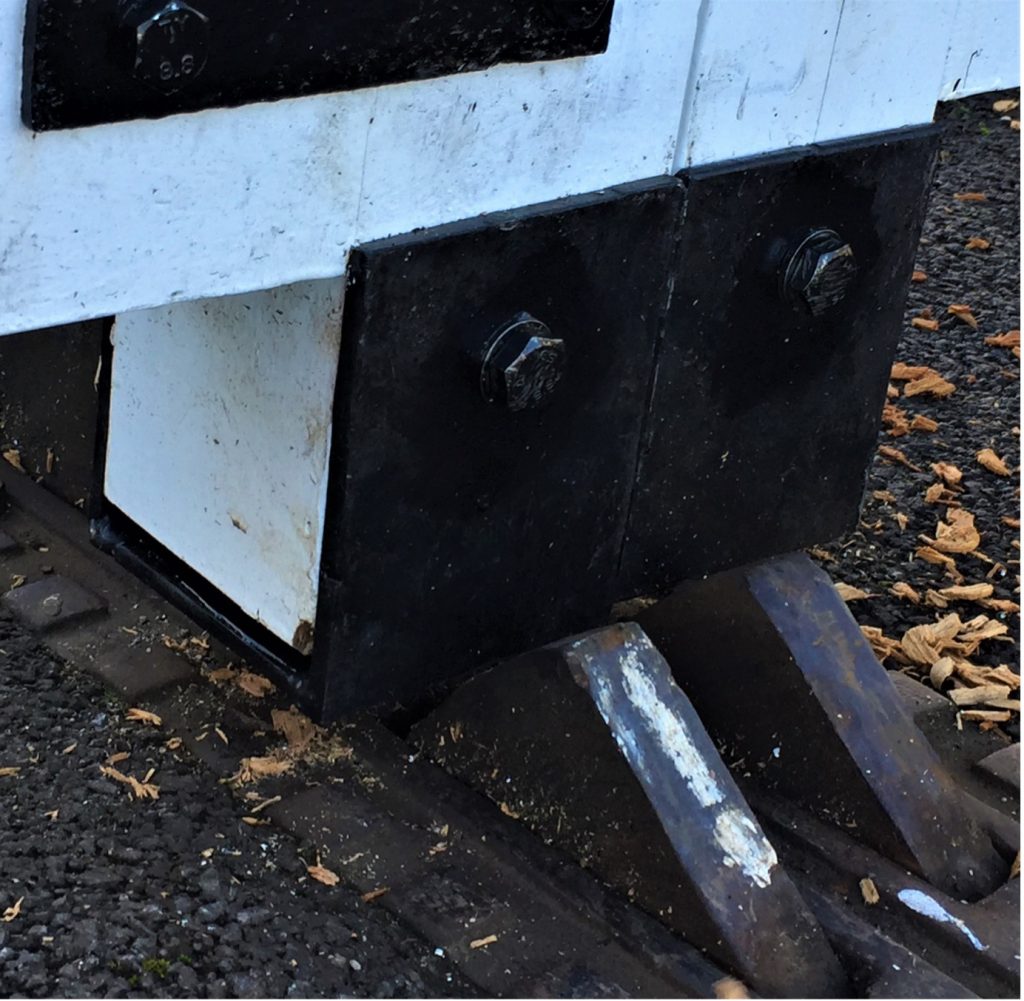
Two of the new boots on the bottom of the gates showing them located within the locking dogs.
John has been touching up white paintwork and repainting the gate hinges as well as cleaning down of the paintwork. The gates will get their final topcoat as soon as the weather permits. With the imminent completion of the two small wicket gates for the pedestrian crossing all that will remain will be to repaint the four concrete support pillars again as soon as the weather permits. The S&T team are in the process of last adjustments to the operating mechanism and once these are completed, they will advise the S&B team so that the new reflective red roundels can be fitted into the correct orientation on the gates.
Alan Smith Richard Dorman and Myself have rebuilt the wooden platform ramp on platform two, which was removed so the S&T team could get to the gate linkage which is housed underneath. Unfortunately, once the timberwork was removed a large a mount of rotten timber was found and this we have subsequently replaced (even reused a piece of the old gate). We have also dismantled the old gates and salvage what we could with the metal work going to scrap and the old timber going for firewood.
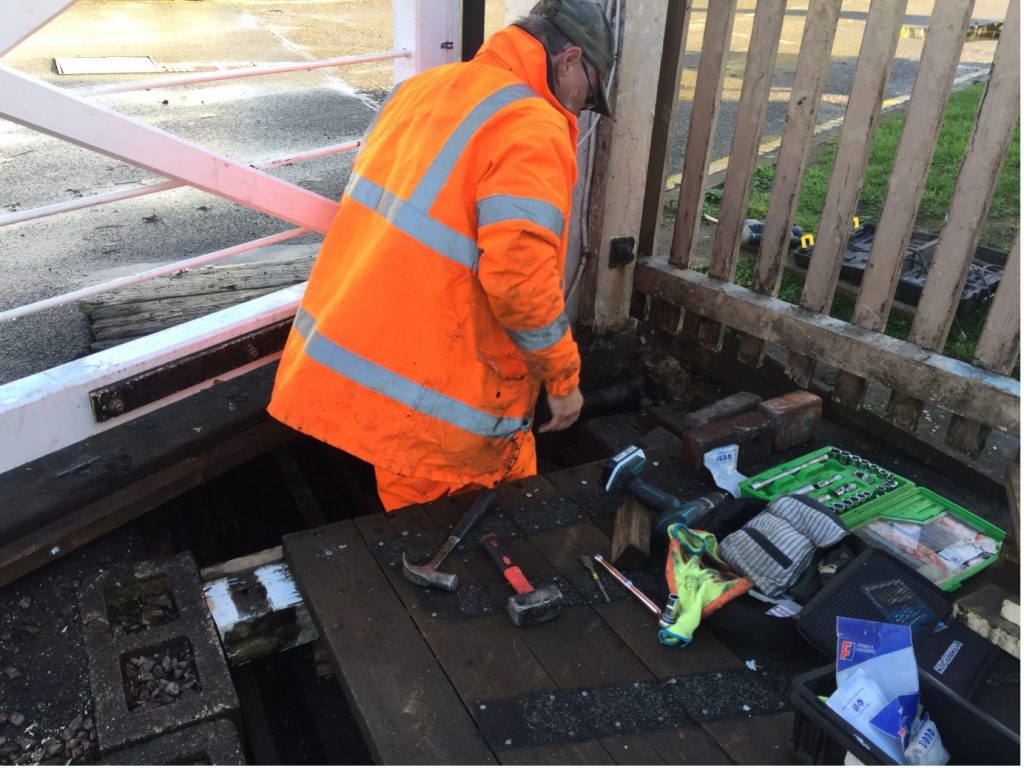
Alan Smith in the depths of the gate linkage area sorting out the last part of the ramp rebuild.
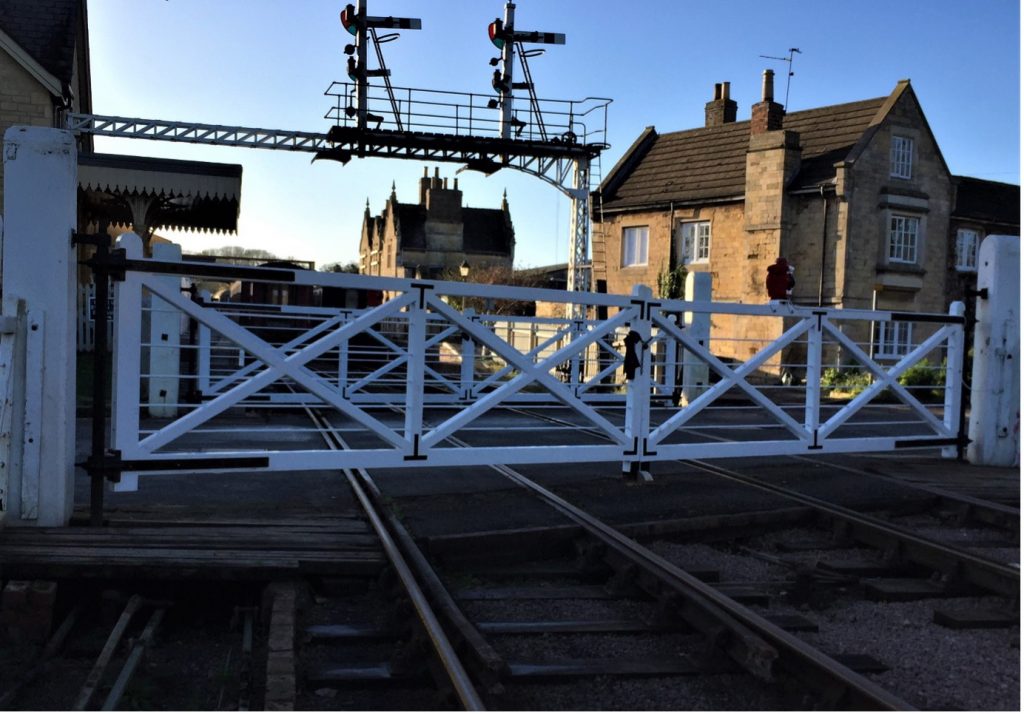
The completed gates in their glory.
Note:- The picture earlier is a screen shot from the web cam mounted on the side of the signal box.
Our thanks to RailcamUK for the fourth picture from their webcam on the Wansford signal box. Have a look at railcam.uk for some excellent cams both on the network and also heritage lines across the UK.
